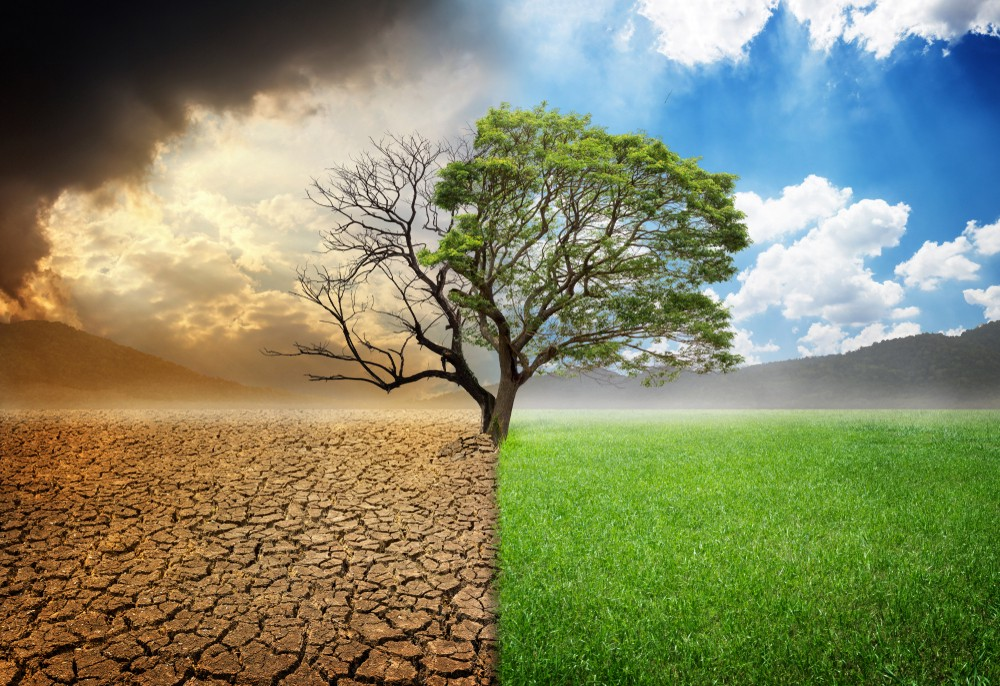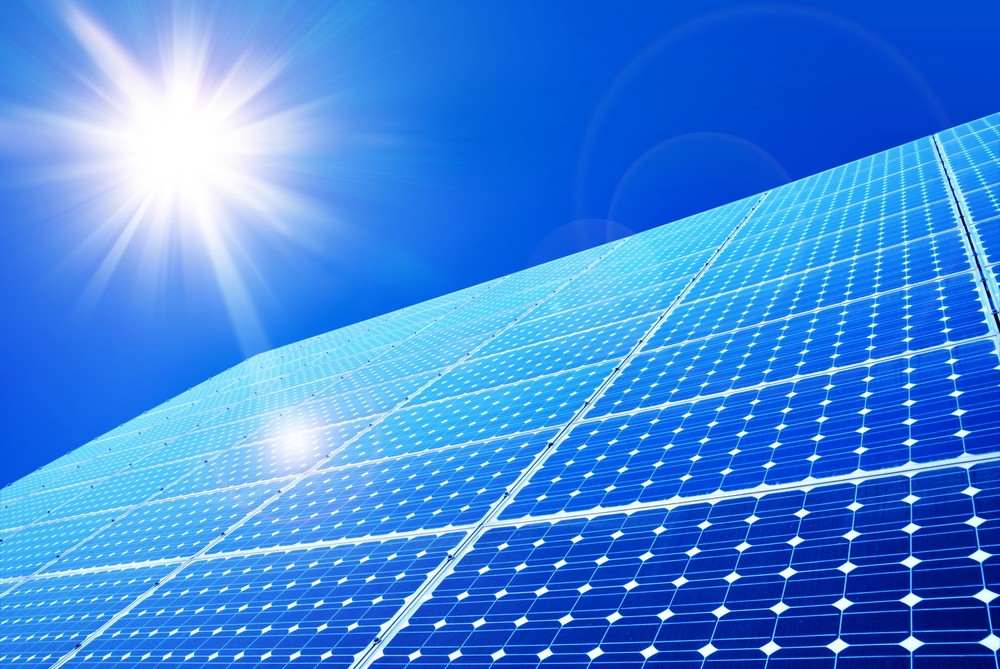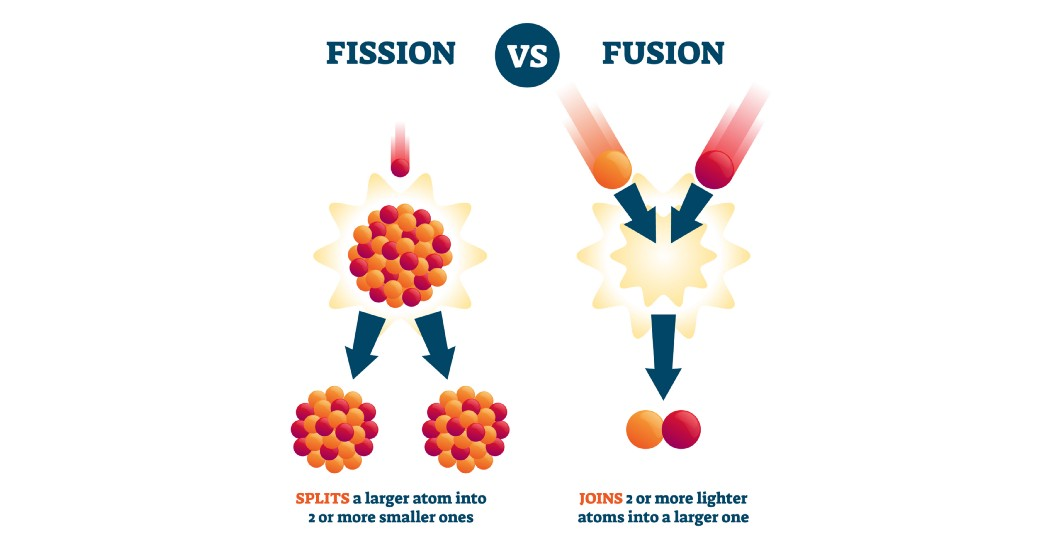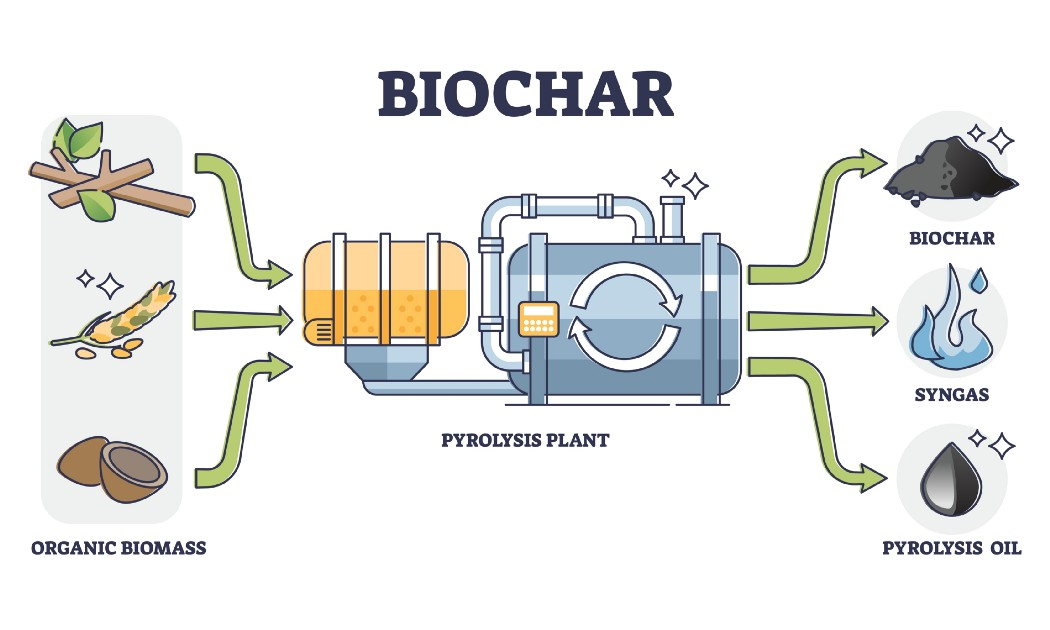· 16 min read
With the recent heat waves and forest fires in many parts of the world, the consequences of climate change are becoming more and more obvious. Although climates are always naturally changing slowly (more in How Past Climates Inform Our Future), the current changes happen a lot faster due to human activities.
The mean reason for climate change is that greenhouse gases cause heat to be trapped in the earth’s atmosphere. These greenhouse gases come from different sources. Some are natural, for example volcanoes, forest fires, permafrost, and wetlands; others are caused by humans, for example energy production, industrial activities, and deforestation.
As the disastrous consequences are coming much faster than expected, the urgent question is what we can do about it. One of the answers is decarbonization. Decarbonization means removing or reducing the amount of CO2 that is emitted into the atmosphere. Another answer is managing the sun’s and our planet’s radiation. These strategies can help our planet to keep its current temperature or cool down again:

Conventional mitigation strategies
The first way we can help our planet keep its temperature or cool down again is using conventional climate change mitigation strategies. These strategies contribute to decarbonization. Most of them are already well established and risks related to these strategies are well-managed.
Renewable energy
The first conventional mitigation strategy is using renewable energy. Renewable energy is energy from renewable sources. These sources are called renewable as the source is available again after a relatively short period of time. This as compared to for example fossil fuels, which takes millions of years to be replenished. Examples of renewable energy sources are:
- wind energy,
- tidal and wave energy,
- geothermal energy,
These sources help mitigate climate change, as they prevent us from burning fossil fuels. Burning fossil fuels is problematic, as large amounts of carbon that has been stored away over a long period of time is suddenly emitted into the atmosphere as CO2. As decarbonization through renewable energy is extremely effective, the development of renewable energy projects should be seen as a top priority (more on factors influencing the acceptance of renewable energy projects).

Nuclear power
The second conventional mitigation strategy is using nuclear power. Nuclear power is electricity generated from the heat that is created when heavy atoms are split into lighter atoms in a nuclear reactor. This process is called nuclear fission. As nuclear fission does not emit any CO2, using this method prevents yearly 1.2–2.4 Gt CO2 emissions when compared to power production with coal or natural gas. This is equivalent to the CO2 emission of a plane flying non-stop for 550–650 years. Although energy from nuclear fission is a low-carbon solution, it comes with a number of major disadvantages. Disadvantages include high operational costs and radioactive pollution.
An alternative to nuclear fission as renewable energy source is nuclear fusion. In nuclear fusion, to opposite happens: two lighter atoms are combined into one heavier atom. This also sets free a lot of energy in the form of heat; our sun produces its heat with nuclear fission as well. Nuclear fusion can generate four times more energy than nuclear fission from the same amount of input, and about 4 million times more energy than burning oil and coal. And it doesn’t produce radioactive waste. Currently, the first test reactor is being built, and is expected to be up and running in 2035. This means it still takes many years before this source can be used on a large scale.

Carbon capture and storage utilization
The third conventional mitigation strategy is carbon capture and storage from processes that are based on fossil fuels. Carbon capture and storage means that CO2 gases are separated, captured, turned into a liquid, and transported through pipelines or with ships to reservoirs. Here, they are stored for a very long time. Alternatively, the captured CO2 can be used to create other products, such as fuel. The goal of this strategy is to be able to use fossil fuel, but without CO2 emissions.
To be able to capture CO2, several promising technologies have been developed:
- pre-combustion technologies capture CO2 before the fossil fuel is burned
- post-combustion technologies capture CO2 after the fossil fuel is burned
- oxyfuel combustion technologies allow burning fossil fuel with pure oxygen instead of normal air so that mostly CO2 and water are produced in the process. This makes capturing CO2 easier than when CO2 is mixed with other gases.
Although this sounds promising, it currently still has several disadvantages that need to be addressed. These disadvantages include safety risks when stored CO2 leaks, energy inefficiency when new products are produced, and high costs.
Alternative fuels and improving energy efficiency
The fourth conventional mitigation strategy is using alternative fuels and improving energy efficiency. Alternative fuels to fossil fuels can be biofuels, for example biofuels made from microalgae. These alternatives have in their life-cycles low or zero carbon emissions. For example, fuels based on microalgae have low carbon emissions over their life-cycle, as they capture CO2 from the atmosphere during growth.
Also, it is important that energy efficiency is improved. For example, in the production industry, waste heat generated during the production process can be used to create electricity. In the transportation sector, energy efficiency can be achieved for example with more efficient engines.

Negative emission strategies
The second way we can help our planet keep its temperature or cool down again is using negative emission strategies. Negative in this context means that more is removed than added. These strategies also contribute to decarbonization. The goal is removing CO2 from the atmosphere.
Bioenergy carbon capture and storage
The first negative emission strategy is bioenergy carbon capture and storage. This means that bioenergy is extracted from biomass and the carbon is captured and stored. Here, the principles of alternative fuel and carbon capture and storage utilization are combined: biomass captures CO2 in the natural photosynthesis process during growth, which is then used as fuel. Photosynthesis is the process of converting CO2 and water with the help of sunlight into nutrients. The CO2 emitted as a result from burning the fuel is captured and stored. This strategy can significantly contribute to reducing CO2 from the atmosphere.
Afforestation and reforestation
The second negative emission strategy is afforestation and reforestation. Afforestation means growing a new forest in an area that didn’t have a forest in the past. Reforestation means planting new trees in an area that used to have a forest. Depending on tree species, CO2 is taken up for 20–100 years until the trees are matured. After that, CO2 storage rates slow down significantly.
Trees are the most effective, natural way to decarbonize. This is because they capture CO2 from the atmosphere and store it in their trunk, leaves, etc. Also after the tree, leaves etc. die, CO2 remains captured in the dead organic matter, which also ends up in the soil through decomposition. As forests can store carbon for a very long time, afforestation and reforestation are important strategies to mitigate climate change.
In this video is shown how seed balls are used to plant a lot of trees in Kenya:
CGTN Africa on YouTube
Biochar
The third negative emission strategy is creating biochar. Biochar is charcoal made from biomass. Biomass can be for example agricultural waste, forestry leftovers, and crops. Creating biochar is carbon negative, as the plants used CO2 from the atmosphere during growth, which remains captured in the biochar instead of being released back into the atmosphere.
Also, biochar can be put to good use. For example, when put in soil, it improves the soil structure, makes soil able to hold more water, and reduces erosion. As biochar takes about 4,000 years to decompose, it is a very effective way to remove carbon and store it for a long time.

Soil carbon sequestration
The fourth negative emission strategy is soil carbon sequestration. Carbon sequestration is the capture and storage of CO2; soil carbon sequestration means that CO2 is captured from the atmosphere by changing how land is used so that the soil can store more carbon. How much carbon soil can store depends the CO2 input through for example fertilizers, and the CO2 output through for example soil disturbance. Methods to improve soil carbon sequestration include:
- crop rotation, which involves growing different crops in subsequent years on the same land to prevent exhaustion of the soil
- zero-tillage, which means that the soil is untouched between harvesting a crop and planting new crops
- nutrient management, which involves for example using fertilizers
- using biochar (see previous section)
- water management, which involves giving crops the amount of water they need to thrive
Although this strategy is effective, CO2 is not stored for a long time and once soil is saturated, no more carbon can be stored. Depending on the climatic conditions, this can take between 10 and 100 years. After saturation, continuous management is needed to make sure that the carbon stays in the soil, instead of ending up in the atmosphere again.
In this video is shown in more detail how carbon is stored in the soil and what role fungi play (0:00–1:35):
Soil Food Web School on YouTube
Direct air carbon capture and storage
The fifth negative emission strategy is direct air carbon capture and storage. Direct capture and storage means that CO2 is extracted from the outside air. This is done by bringing air in contact with chemicals called sorbents. These chemicals can either absorb CO2 by dissolving it when the sorbent is liquid, or adsorb CO2 by binding it when the sorbents is solid. The captured CO2 can be stored in reservoirs or used to create products. In this video is explained how direct air carbon capture works (2:48–3:38):
Carbon Engineering Ltd. on YouTube
Even though this sounds promising, a major disadvantage of this method is that it requires a lot of energy to operate the fans, pumps, etc, to compress the CO2, and to reverse the sorbents once they are saturated. Another major disadvantage is that it is very expensive to build a plant. As it is easier to capture CO2 from highly concentrated gases, capturing carbon before it is released in the atmosphere is more effective.
Ocean fertilization
The sixth negative emission strategy is ocean fertilization. Ocean fertilization means adding nutrients to the surface of the ocean. Normally, nutrients in the ocean come from and are limited by the decomposition of marine animals and plants. By adding nutrients, more biological activity is promoted, which makes it possible to capture more CO2. For example, microscopic organisms called phytoplankton can use these nutrients to grow. This is helpful as they are important for capturing and storing CO2 in the ocean, just like plants do on land. From the surface, their biomass is transported in the deep ocean.
In this video, you can see an example technology for ocean fertilization and how it works:
Enhanced terrestrial weathering
The seventh negative emission strategy is enhanced terrestrial weathering. Terrestrial weathering is a natural process, which means that silicate rocks decompose. During this decomposition, a chemical reaction uses CO2 from the atmosphere and releases different types of ions. Ions are atoms with a positive or negative charge. These ions end up in groundwater and eventually reach the ocean where they are stored.
Enhanced terrestrial weathering involves the same the process, but is sped up by grinding the silicon rock into small pieces. The much larger surface makes it possible to capture more CO2.
In this video, terrestrial weathering and enhanced terrestrial weathering are explained (0:14–2:05):
Leverhulme Centre for Climate Change Mitigation on YouTube
Ocean alkalinity enhancement
The eighth negative emission strategy is ocean alkalinity enhancement. Ocean alkalinity enhancement is similar to ocean fertilization, but in this case, alkaline substances are added to the water instead of nutrients. Alkalinity is the opposite of acidity. This is helpful, as more chemical reactions can take place that capture CO2 and store it in an inorganic form when the ocean’s alkalinity is higher. Alkalinity can be increased using different methods, including:
- enhanced terrestrial weathering (see previous section)
- adding alkaline silicate rocks directly into the ocean
- adding lime to the ocean surface
- accelerated weathering of limestone
Ocean alkalinity enhancement, ocean alkalinity and acidity, and CO2 capture and storage is nicely explained in this video (0:00–2:42):
Ocean carbon dioxide removal on YouTube
Wetland restoration and construction
The ninth negative emission strategy is wetland restoration and construction. Wetlands are just like forests able to capture and store a lot of carbon with the help of photosynthesis. Examples of wetlands are peatlands, mangrove forests, tidal marshes, and seagrass meadows. A seagrass meadow is an area under water covered by seagrass.

Although wetlands can capture and store a lot of CO2, they also emit non-CO2 greenhouse gases such as methane (CH4) and nitrous oxide (N2O). When wetlands are constructed and restored, this should be evaluated for the specific site to make sure the wetland is a carbon sink and does not accidentally become a greenhouse gas source.
Radiative forcing geoengineering strategies
The third way we can help our planet keep its temperature or cool down again is using radiative forcing geoengineering strategies. Radiative forcing geoengineering strategies involve managing solar and terrestrial radiation. For solar radiation, this means that sunlight is reflected back into outer space; for terrestrial radiation, this means that more heat radiated by the earth reaches outer space. The goal of these strategies is to stabilize and reduce the global temperature.
The disadvantage of all these strategies is that they solve the symptoms (higher temperatures because of higher CO2 levels), not the cause (CO2 emissions). This means that when CO2 levels keep rising while these strategies are applied, the planet’s temperature could remain the same. But when the application is stopped and the cooling effect removed, the higher CO2 levels cause the planet to heat up much more suddenly.
Stratospheric aerosol injection
The first radiative forcing geoengineering strategy is stratospheric aerosol injection. Aerosols are gasses that contain tiny solid or liquid particles. Well-known examples are clouds and mist. Stratospheric aerosol injection means that aerosols are artificially injected into the stratosphere to cause a cooling effect. The stratosphere is the second layer in the atmosphere; the first layer in which we live is the troposphere.
This strategy is inspired by a volcano eruption in 1991 in the Philippines. During this eruption, a lot of aerosols were released into the atmosphere, which caused the global temperature to lower by 0.4–0.5°C (0.7–0.9°F). When done artificially though, it is uncertain what the possible harmful side effects are.
In this video, stratospheric aerosol injection is explained (1:24–4:08) including possible consequences (4:08–6:29):
Kurzgesagt — In a Nutshell on YouTube
Marine sky brightening
The second radiative forcing geoengineering strategy is marine sky brightening. Marine sky brightening is also called marine cloud brightening or cloud albedo enhancement. The goal of this strategy is to keep or reduce global temperatures by making clouds more reflective. This can be done by adding seawater particles or chemicals. When seawater is sprayed into the air, the small droplets evaporate, leaving behind salt crystals. This method is still in infant stages, so proper research need to be done on consequences and appropriate technologies to apply this strategy need to be developed.
This video explains and shows how marine sky brightening works:
Southern Cross University on YouTube
Space-based mirrors
The third radiative forcing geoengineering strategy is using space-based mirrors. Space-based mirrors are brought into orbit around the earth to partly reflect the incoming solar radiation. Alternatively, these mirrors can be installed in Lagrangian points. Lagrangian points are places in space where the pulling forces of the sun and the earth cancel each other out, so that objects in this area remain in the same spot. The goal of reflecting sunlight is reducing global temperatures. The disadvantages of this approach, apart from solving the symptoms and not the problem, are the high costs for transporting the equipment into space.
Surface-based brightening
The fourth radiative forcing geoengineering strategy is surface-based brightening. Surface-based brightening involves brightening the earth’s surface to reflect sunlight. This is done naturally by for example snow, and could be done artificially by painting roofs and roads white, by covering deserts with reflective plastic sheets, and putting reflective floating panels over water bodies. Unfortunately, the positive effect of these measures is expected to be too small. Also, it can have negative side effects. For example, sheets in deserts may affect the ecosystem.

Cirrus cloud thinning
The fifth radiative forcing geoengineering strategy is cirrus cloud thinning. Cirrus clouds are high clouds made up from ice crystals instead of water droplets. These clouds reflect a lot of sunlight, but reflect even more heat radiated by the earth. By thinning these clouds, global temperatures can be reduced, as more heat from the earth can travel to outer space.
Cirrus clouds can be thinned by injecting aerosols into the clouds. This reduces the thickness of the cloud, but also makes sure the cloud stays around for a shorter time. More research needs to be done on effective, non-toxic aerosols and side effects of this strategy. Also, cost-effective technologies that can apply cirrus cloud thinning still need to be developed.
In this video, the clouds involved in cirrus cloud thinning and sky brightening are compared (0:00–0:32):
News Direct on YouTube
Conclusion
So, we can use different strategies to help our planet keep its temperature or cool down again. These include:
- Conventional mitigation strategies: using renewable energy, using nuclear power, capturing and storing emitted carbon, and using alternative fuels and improving energy efficiency.
- Negative emission strategies: capturing and storing bioenergy, afforestation and reforestation, creating biochar, appyling soil carbon sequestration, direct air carbon capture and storage, ocean fertilization, enhanced terrestrial weathering, ocean alkalinity enhancement, and wetland restoration and construction
- Radiative forcing geoengineering strategies: stratospheric aerosol injection, marine sky brightening, space-based mirrors, surface-based brightening, and cirrus cloud thinning
As conventional and negative emission strategies focus on solving the problem (CO2 emissions), these are more appropriate than radiative forcing geoengineering strategies, which only focus on solving the symptoms (higher temperatures because of higher CO2 levels in the atmosphere).
How we can take action
Here are practical ideas of what you and I can do to reduce CO2 emissions:
- Supporting reforestation by planting trees
- Supporting reforestation by making and/or spreading seed balls; in this video is explained how you can make your own seed balls:
Gardening Australia on YouTube
- Driving a car based on biofuel or other renewable energy sources instead of fossil fuels
- Carpooling instead of driving in separate cars
- Buying renewable energy from energy company
- Traveling by train instead of flying

- Driving a smaller rather than larger car
- Removing snow before driving off
- Driving at constant speed
- Taking foot from accelerator pedal instead of braking
Do you have further ideas of what you and I could do? Thank you in advance for leaving them in a comment to this question for us all to get inspired.
This article is also published on the author's blog. Illuminem Voices is a democratic space presenting the thoughts and opinions of leading Energy & Sustainability writers, their opinions do not necessarily represent those of illuminem.






